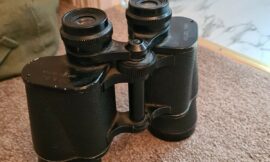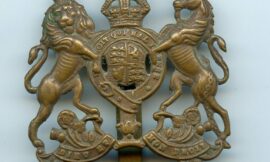The Maschinenpistole 40, commonly known as the MP40, is one of the most recognizable submachine guns of World War II. Designed in Nazi Germany and widely used by the Axis forces, the MP40 became a symbol of German infantry firepower. Known for its distinctive appearance and sound, the MP40 left a significant mark on military history and weapon design.
Historical Background
The MP40 was developed as an improvement over the earlier MP38, which itself was a refinement of submachine guns used during World War I. The need for a reliable, mass-producible submachine gun became evident during the interwar period as military tactics evolved to emphasize mobility and close-quarters combat.
The MP40 was designed by Heinrich Vollmer with input from Erma Werke, a German arms manufacturer. It was officially adopted by the German army in 1940, hence the designation MP40. Over one million units were produced during the war, making it one of the most common submachine guns of the era.
Design and Features
The MP40 is a blowback-operated, open-bolt submachine gun chambered for the 9×19mm Parabellum cartridge, a standard pistol round at the time. It fires at a rate of about 500-550 rounds per minute, which is relatively slow for a submachine gun, allowing for better control and accuracy during fully automatic fire.
One of the standout features of the MP40 is its design simplicity and use of stamped metal parts, which facilitated mass production. The weapon’s receiver and other major components were made from sheet metal, a departure from the more traditional milled steel parts used in earlier firearms. This manufacturing technique not only reduced production time and cost but also made the MP40 lighter and easier to handle.
The MP40 has a folding metal stock, making it more compact and suitable for paratroopers, tank crews, and other troops requiring a compact weapon. The stock folds underneath the gun, reducing its length significantly and aiding in transport and maneuverability.
Ergonomics and Handling
The MP40 was designed with user-friendliness in mind. It features a pistol grip and an additional grip near the magazine well, providing a stable firing platform. The magazine itself serves as a foregrip, a feature that, while innovative, sometimes led to feeding issues if excessive pressure was applied to the magazine during firing.
The weapon’s safety mechanism is simple but effective. The bolt handle can be locked into a notch on the receiver to prevent accidental discharge. Additionally, the MP40’s iron sights are straightforward, consisting of a fixed front sight and a flip-up rear sight with settings for 100 and 200 meters.
Production and Variants
Production of the MP40 began in earnest in 1940 and continued until the end of World War II. Various manufacturers, including Erma Werke, Steyr, and Haenel, produced the MP40, with minor differences in markings and finishes but maintaining overall compatibility and functionality.
Although primarily used by the German army, the MP40 was also supplied to other Axis forces and various resistance groups throughout Europe. It became particularly iconic in the hands of German paratroopers and SS troops.
Service History
The MP40 saw extensive service throughout World War II in all theaters where German forces were engaged. Its compact size and fully automatic fire made it ideal for urban and close-quarters combat. However, it also had limitations, including a relatively short effective range and a tendency to jam if not properly maintained.
Despite these drawbacks, the MP40 was respected by both German soldiers and their adversaries. Allied troops often used captured MP40s, valuing them for their reliability and firepower.
Legacy
The MP40’s influence extended beyond World War II. It inspired the design of subsequent submachine guns and influenced post-war firearms development. Its ergonomic features, use of stamped metal parts, and practical design elements can be seen in later weapons such as the Israeli Uzi and the American M3 Grease Gun.
The MP40 also became a cultural icon, frequently depicted in films, television shows, and video games that portray World War II. Its distinctive look and historical significance have cemented its place in popular culture.
Conclusion
The Maschinenpistole 40 is more than just a submachine gun; it represents a significant advancement in military small arms design. Its blend of simplicity, functionality, and mass-producibility made it a key weapon for the German army during World War II. Today, the MP40 is remembered as a symbol of the era, with a legacy that continues to influence firearm design and military history.


